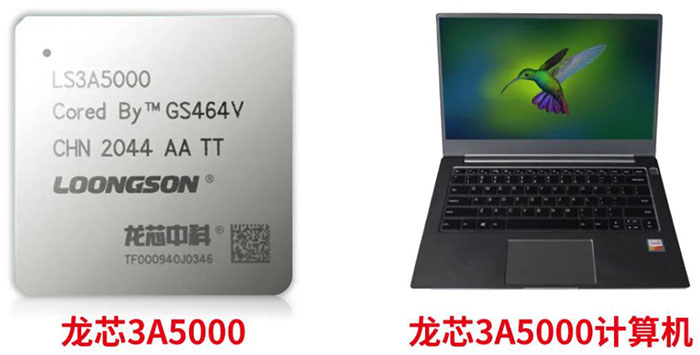On Friday, Chinese chipmaker Loongson Technology launched a brand-new CPU. What is notable about the new Loongson 3A5000 is that this quad-core processor is the first to be based upon Loongson's own instruction set architecture (ISA). Previously, Loongson CPUs were MIPS-based, but the 20-year-old firm has developed and launched its own ISA, without the need for foreign licensing, according to the company.
Linux-focused news site Phoronix noticed that some people, probably from the Loongson development and support staff, have been testing Loongson 3A5000 series hardware using the Phoronix Test Suite and OpenBenchmarking.org, so has some early benchmarking results to share with those interested in this new ISA.
Phoronix sums up the first LoongArch ISA chip, quite dismissively. Compared to the modern competition from the likes of Intel, AMD and Arm, the "performance isn't that impressive" says its report. It links benchmark results/comparisons for C-Ray, Perl, and a mixed compute suite – and the Loongson 3A5000 doesn't shine in any of them. In brief, the Chinese quad-core is roughly on a par with the likes of the Intel Core i3 8109U / Core 2 Quad Q9500 / Core i5 750, or Armv8-based Phytium FT-2000.

Loongson's new 12nm processor is claimed by the company to offer up to a 50 per cent performance boost over the prior MIPS-based chips it sold. Other advantages are that they are claimed to be more energy efficient, and support up to DDR4-3200 memory. This chip development is part of China's overall goal for computational architecture independence – the 3A5000 will be shipping in domestically marketed PCs, and there is going to be a server version too.
Some Loongson 3A5000 specs are shared by CnTechPost, as follows:
- Loongson 3A5000 quad-core 12nm CPU runs at 2.3GHz-2.5GHz
- Each core has a 64-bit superscalar GS464V autonomous microarchitecture with four fixed-point units, two 256-bit vector operations units, and two access memory units
- Compared to previous generation Loongson 3A4000, Loongson 3A5000 delivers more than 50 percent higher performance and 30 percent lower power consumption while maintaining pin compatibility.
- Loongson 3A5000 integrates two 64-bit DDR4-3200 controllers with ECC checksum support, and four HyperTransport 3.0 controllers with multi-processor data consistency support.
- Loongson 3A5000 integrates a secure and trusted hardware encryption module.
- GCC, LLVM, GoLang compilers support the processor, as do versions of Java, JavaScript, and NET
- You can run Loongnix or LoongOS on 3A5000 systems.
If you are interested in the LoongArch ISA, you can find documentation on GitHub.













